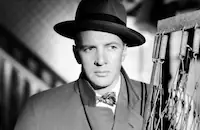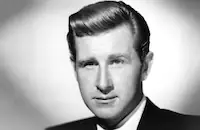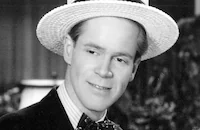Sahara

Brief Synopsis
Cast & Crew
Zoltan Korda
Humphrey Bogart
Bruce Bennett
J. Carroll Naish
Lloyd Bridges
Rex Ingram
Photos & Videos
Film Details
Technical Specs

Synopsis
In 1942, in the face of Nazi aggression in Libya, American tank commander Sgt. Joe Gunn and his men, "Waco" Hoyt, Fred Clarkson and Jimmy Doyle, are ordered to retreat. Surrounded by German troops to the north, east and west, their only viable route lies through the desert to the south. Boarding their damaged tank, the Lulubelle, the Americans head into the parched sands. There they meet a group of Allied stragglers, including Capt. Jason Halliday, a member of the British medical corps whose hospital and patients have been wiped out by the Germans; British soldiers Ozzie Bates and Marty Williams; Peter Stegman, a South African serving in the British military, and Jean Leroux, a French soldier. Knowing that the tank offers their only salvation, Gunn invites the men aboard, even though water supplies are severely limited. As they proceed across the desert, they see Tambul, a British Sudanese solider, and his Italian prisoner, Giuseppe. After Tambul, who is familiar with the desert, tells them about an old caravan trail leading to a well, Gunn appoints him guide and welcomes him aboard the Lulubelle. Realizing that he will perish if left behind, Giuseppe begs Gunn for passage, but the American refuses and drives off. Taking pity on Giuseppe, who stumbles along in the tracks of the tank, Gunn relents and allows him onboard. Soon after, they are attacked by a German bomber. Luring the aircraft to a lower altitude, the Lulubelle blasts it out of the sky, sending its pilot, Capt. Von Schletow, crashing to the ground. After taking Von Schletow prisoner, the troops of the Lulubelle continue on, even though Clarkson has been severely wounded in the attack. Upon arriving at the well, they discover that it is dry. More bad news follows when Clarkson dies of his wounds and the order comes over the radio to regroup and defend the threatened cities of Cairo and Alexandria. Hampered by a sputtering engine and blinding sandstorm, the tank limps toward the ruins of Fort Bir Acroma, the site of the next well. That well is also dry, except for a trickle of water dripping from some underground rocks. Tambu climbs down the well and carefully collects the drops of precious liquid, hoping to gather sufficient resources to continue. Meanwhile, a platoon of Germans, also in search of water, are told by their Arab guide about the well at Bir Acroma. Dispatched by the Germans, a scouting party of two soldiers approaches the ruins, and is captured by Gunn and his men. Gunn bribes one of them with water to reveal the position of the German batallion, and learning that the batallion is five hundred strong, the sergeant proposes that his ragtag force try to delay the Germans until the Allies can regroup. Gunn puts his proposal to a vote, and despite Williams' skepticism, the men choose to risk their lives and fight. To lure the Germans to Bir Acroma, Gunn tells his captives that he will swap food for water and then sends them back on foot to their troops to relay his offer. While Gunn and the others await the enemy, Waco drives the German jeep to the Allied outpost for reinforcements. That night, the German forces swarm over the hills surrounding Bir Acroma. After Stegman is killed in the attack, Von Falken, the German commander, offers to let Gunn and his men go free in exchange for their weapons. Gunn counters with an offer of water for German weapons, and when Von Falken declines, the fighting continues. As the ragtag army think that they are seeing Waco approach the outpost, Waco's truck overheats, leaving him stranded. Swigging the last of the water, Waco starts out on foot. Meanwhile, at the fort, night falls and the Germans attack, killing Williams. Von Schletow then tries to enlist Giuseppe in a scheme to inform the Germans that there is no water. When Giuseppe refuses to cooperate and denounces Hitler, Von Schletow stabs him and escapes. Near death, Giuseppe staggers out to the front line to warn Gunn of the German's treachery. Before Von Schletow is able to expose Gunn's plot, Tambul runs after him and strangles him, and in turn is killed by Nazi bullets. The next day, Von Falken calls another meeting. Representing Gunn, Leroux meets with the German, and after reiterating the terms of guns for water, turns to walk back toward camp and is shot in the back by a Nazi bullet. Now nearly out of ammunition, Halliday speculates that only a miracle can save them. After a German bullet wounds Jimmy, Halliday pulls him into the ruins for shelter and the two perish when a German shell levels the building. Meanwhile, Waco, exhausted and near death, claws his way up a sand dune and is found by a British patrol. Back at the camp, Gunn and Ozzie, the last two surviviors, await death as the Germans attack. When Gunn answers them with gunfire, the Germans, defeated by thirst, offer their guns for water. Halliday's miracle occurs when Gunn discovers that the shelling has opened up the well. After ordering the Germans to disarm for a drink of water, Gunn and Ozzie take them prisoner and begin to herd them through the desert, where they are met by Waco and a platoon of British tanks. When Waco greets Gunn with the news that the British have held the Germans back at El Alimin, Gunn realizes that their sacrifice has not been for naught.

Director

Zoltan Korda
Cast

Humphrey Bogart

Bruce Bennett

J. Carroll Naish

Lloyd Bridges

Rex Ingram
Richard Nugent

Dan Duryea
Carl Harbord
Patrick O'moore
Louis T. Mercier
Guy Kingsford

Kurt Kreuger
John Wengraf
Hans Schumm
Vilmos Gymas
Frank Lackteen
Otto Reichow
Leyland Hodgson
George Neise
Jack Gardner
Leslie Denison
Michael Dyne
Nelson Leigh

Peter Lawford
Henry Rowland
Niels Bagge
Frederick Brunn
Robert L. Stevenson
John Meredith
Tony Marsh
John Royce
Walter Gonn
Louis Adlon
Walter Thiele
Carl Ekberg
Crew
Lionel Banks
Abby Berlin
Harry Joe Brown
Lodge Cunningham
William Kiernan
Zoltan Korda
John Howard Lawson
Eugene Lourie
Philip Macdonald
Rudolph Mat茅
Charles Nelson
James O'hanlon
Henry Pringle
Miklos Rozsa
M. W. Stoloff

Photo Collections
Videos
Movie Clip


Film Details
Technical Specs

Award Nominations
Best Cinematography
Best Sound
Best Supporting Actor
Articles
Sahara (1943)
Sgt. Joe Gunn (Bogart) is an American tank commander fighting alongside seasoned British troops in the Libyan desert in 1942. A Nazi offensive has resulted in the fall of Tobruk and a general retreat of the Allies. Sgt. Gunn and his remaining men, Waco (Bruce Bennett) and Jimmy (Dan Duryea) take on additional Allied stragglers as they nurse their tank (nicknamed "Lulubelle") along on a journey to find a source of water in the desert heat. Among the additional passengers are a Sudanese corporal (Rex Ingram) and his Italian prisoner (J. Carrol Naish), and a Nazi pilot (Kurt Krueger) that the tank crew downs while being strafed. The group reaches a deserted outpost which yields barely enough water to sustain them. A battalion of thirsty German soldiers is fast approaching, and Sgt. Gunn determines to defend the outpost, pretending it is rich in water, thereby drawing the Nazis away from their line and buying time for an Allied reinforcement.
Hungarian director Zoltan Korda was an ideal choice to helm Sahara, as he had already won worldwide acclaim for his handling of The Four Feathers (1939), the desert adventure produced by his brother Alexander Korda. The story of Sahara draws from the Soviet film Trinadtsat (1937), in which a band of soldiers are escorting civilians across the Asian desert when they are surrounded at a waterhole by a large group of bandits. There are also similarities to John Ford's all-male desert adventure, The Lost Patrol (1934). Comparisons aside, Korda's film has immediacy and tension and is notable for minimizing the propagandizing that usually accompanies wartime movies. His use of a multi-national cast also feels refreshingly uncontrived. Adding immeasurably to the film are the contributions of cinematographer Rudolph Mate and composer Miklos Rozsa. Rozsa had scored Korda's The Four Feathers and would write the music for another desert warfare film from 1943, Billy Wilder's Five Graves to Cairo.
Sahara was shot in the early months of 1943 in the California desert, specifically the Borego Desert in the Imperial Valley, just north of the Mexican border. The valley is 235 feet below sea level, and the mid-winter temperatures at the time of the filming would have been in the nineties. The cast and crew stayed at the Planter's Hotel in the small town of Brawley, about forty miles from the filming location. Humphrey Bogart was on loan from home studio Warner Bros. for the Columbia film. In their biography Bogart, A. M. Sperber and Eric Lax described the star's routine on the shooting location: "Because Brawley offered little diversion in the evenings, Bogart regularly invited colleagues up to his suite for drinks. The German actor Kurt Krueger, who played a downed Nazi airman, spent congenial nights in the star's sparsely furnished rooms. Bogart enlivened the occasions, and 'couldn't have been more outgoing.' Krueger shared a ride to the location one day with Mayo Methot, Bogart's then-wife, who sat beside him, carefully cradling a thermos. Why, he asked, was she bringing coffee when there was always coffee on the set? Mayo threw back her head and let out a peal of throaty laughter. 'Coffee? Hell, no! Bogie needs his ice-cold Martinis.'"
Bogart and his wife Mayo were nicknamed "the Battling Bogarts" during the early 1940s; they were notorious for mixing loud and sometimes violent arguments with their late-night drinking. According to Sperber and Lax, Bogart often reported to the Sahara set hungover and quarrelsome, arguing with Korda about his character's dialogue. After the film was completed, Korda complained to Bruce Bennett about Bogart's behavior. "'Don't you realize what was going on?' Bennett told him. 'He was learning his lines.' 'My God,' Zoltan replied. 'If I'd known that, it would have taken a load off my mind.'"
The all-male cast of Sahara was widely praised by the critics. J. Carrol Naish was nominated for an Oscar for his role as the Italian prisoner; his Axis character is treated sympathetically, unusual for a wartime film. Rex Ingram is memorable as the Sudanese officer; the versatile Ingram had also appeared in the Korda production The Thief of Bagdad (1940), as the Genie. Sahara also provided one of Bruce Bennett's best roles. Bennett would appear again with Bogart in Dark Passage (1947) and The Treasure of the Sierra Madre (1948). Notable screen villain Dan Duryea was handed a rare good guy role. As quoted in Hollywood Players: The Forties, Duryea later said "Sahara is a picture which practically nobody remembers my being in; one of the few pictures I didn't play a heel and maybe for that reason."
"Walt" in Variety found much else to praise: "Script is packed with pithy dialog, lusty action and suspense, and logically and well-devised situations avoiding ultra-theatrics throughout. It's an all-male cast, but absence of romance is not missed in the rapid-fire unfolding of vivid melodrama. ...Production mounting is topnotch throughout, with desert providing major portion of the footage. Photography by Rudolph Mate is excellent." Bosley Crowther in New York Times justly calls Sahara a "tense, exciting film," and "...as rugged as Mr. Bogart all the way and in a class with that memorable picture which it plainly resembles, 'The Lost Patrol'.
Sahara was remade quite faithfully in 1953 as a western, Last of the Comanches. Directed by Andre De Toth, the film shifts the action to the American West of 1876, as a Cavalry Sgt. (Broderick Crawford) leads the survivors of a devastating Indian attack across the desert in search of safety. The soldiers are joined by a varied batch of stagecoach passengers, and water is scarce. When they find water at a deserted mission, they decide to stand their ground against the approaching Comanche Indians, who are also in need of water. Sahara itself was not remade until 1995, as a Showtime TV movie filmed in Australia, with Jim Belushi in the Bogart role.
Producer: Harry Joe Brown
Director: Zoltan Korda
Screenplay: John Howard Lawson, Zoltan Korda
Story and Adaptation: Philip MacDonald, James O'Hanlon
Cinematography: Rudolph Mate&eacc;
Film Editing: Charles Nelson
Music: Miklos Rozsa
Art Direction: Lionel Banks
Set Decoration: William Kiernan
Cast: Humphrey Bogart (Sgt. Joe Gunn), Bruce Bennett (Waco Hoyt), J. Carrol Naish (Giuseppe), Lloyd Bridges (Fred Clarkson), Rex Ingram (Sgt. Major Tambul), Dan Duryea (Jimmy Doyle), Kurt Krueger (Capt. von Schletow).
BW-97m.
by John M. Miller

Sahara (1943)
Quotes
Trivia
Notes
The working title of this film was Somewhere in Sahara. Onscreen credits note that this picture was based on an incident in the Soviet photoplay The Thirteen. That film, released as Trinadstat in Russia, was a 1937 Amkino Soviet production directed by Mikhail Romm. The opening credits dedicate the film to "the IV Armored Corps of the Army Ground Forces, whose cooperation made it possible to tell this story." The opening credits also include the following prologue: "In June 1942, a small detachment of American tanks with American crews joined the British Eighth Army in North Africa to get experience in desert warfare under actual battle conditions. History has proved that they learned their lesson well..." Although the character played by Louis Mercier is named "Jean Leroux" in the CBCS and in reviews, his dog tags bear the name of "Pierre Leroux."
Hollywood Reporter news items yield the following information about this film's production: In November 1942, it was announced that the film was to star Glenn Ford and Melvyn Douglas and that Bernard Nedell was testing for a top role. Although an November 18, 1942 Hollywood Reporter news item notes that Brian Aherne was to be in the cast, this reference might have been a typographical error for Brian Donlevy. A mid-January 1943 news item adds that Humphrey Bogart was replacing Brian Donlevy, who was tired of appearing in war films. Donlevy then took over the role Bogart was to have played in the Columbia comedy Once Upon a Time. A Hollywood Reporter production chart places Lewis Wilson, Jess Barker and William Carter in the cast, but their participation in the released film has not been confirmed.
Desert scenes were shot on location at Brawley, the Imperial Valley and Chatsworth, CA, and Yuma, AZ, according to Hollywood Reporter news items. Makeup artist Henry Pringle created the effect of facial perspiration by coating the actors' faces with vaseline and then spraying them with water, according to a Look article. A news item in New York Times adds that 2,000 tons of sand were hauled onto the set to create the effect of loose sand. The effect of ripples and swirls was created by spraying the sand with a film of light paint and then blowing it with a wind machine. Shadows were spray-painted on the hills to make them stand out more clearly, according to the New York Times article. The film had its premiere at Camp Campbell, KY, as part of a program celebrating the first anniversary of the activation of the IV Armored Corps, according to a news item in Hollywood Reporter. J. Carroll Naish was nominated for an Academy Award for Best Supporting Actor for his performance in this film. The picture was also nominated for Best Cinematography and Best Sound Recording. The 1952 Columbia western Last of the Comanches, starring Broderick Crawford, Barbara Hale and Lloyd Bridges and directed by Andre de Toth, was loosely based on Sahara.

Miscellaneous Notes
Released in United States 1943
Released in United States 1943













